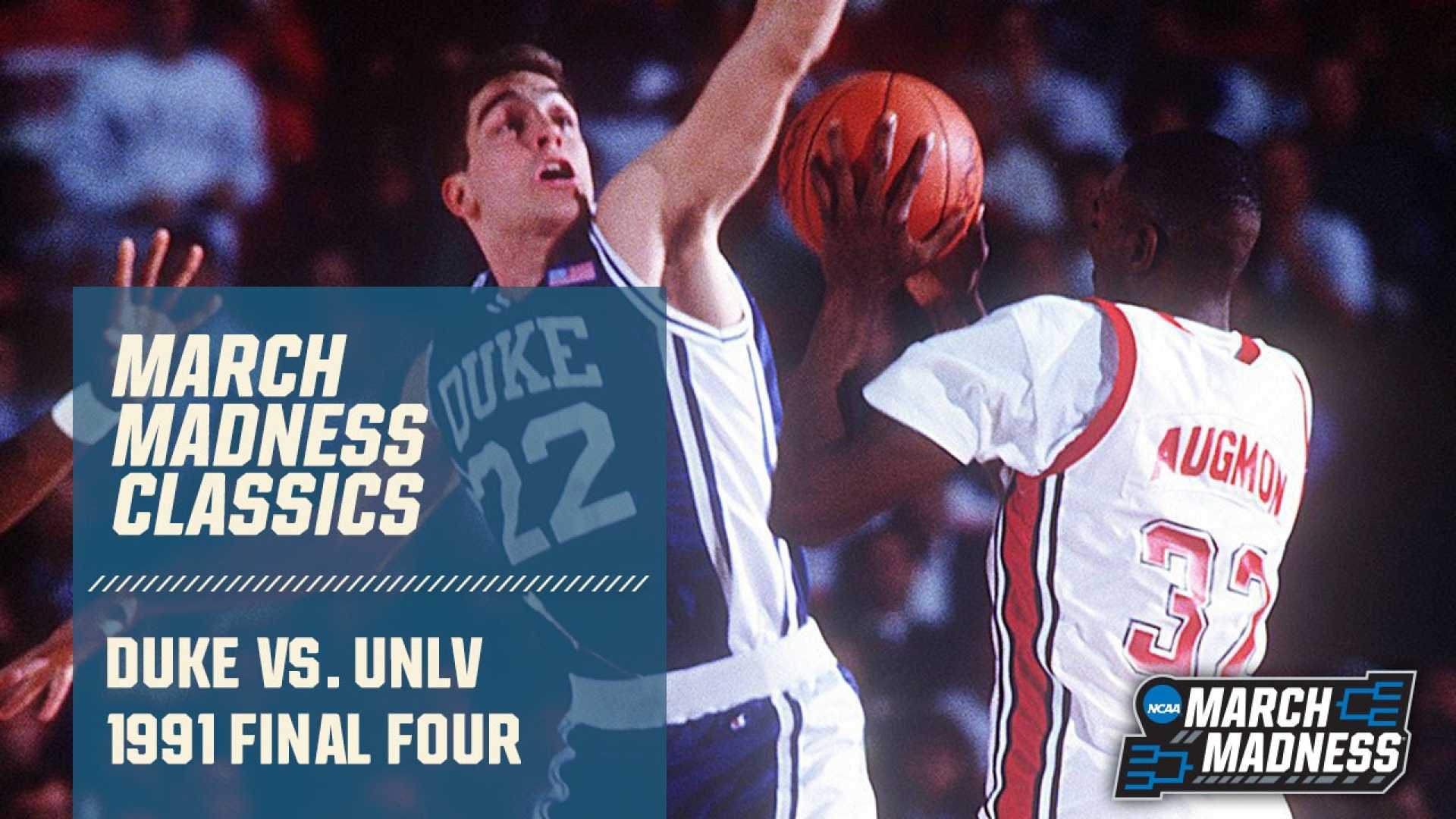Sports
The Legacy of 1991: Duke’s Upsetting Triumph Over UNLV

INDIANAPOLIS, Ind. — On March 30, 1991, the Duke Blue Devils pulled off one of the biggest upsets in NCAA Tournament history, defeating the previously unbeaten UNLV Runnin’ Rebels 79-77 in a thrilling national semifinal at the Hoosier Dome.
This unforgettable match is often overshadowed by the iconic moments that followed, particularly Grant Hill‘s alley-oop to Christian Laettner the next year. Laettner’s buzzer-beater remains a highlight, but the significance of Duke’s victory over UNLV deserves equal recognition.
The game preserved the legacy of Bob Knight’s 1975-76 Indiana Hoosiers as the last team to finish an NCAA season undefeated. It simultaneously marked the end of a remarkable run for Jerry Tarkanian‘s Runnin’ Rebels, who were seeking a repeat championship.
Most crucially, it represented a significant moment in the public perception of Duke University and its basketball program. The victory marked the last time, arguably, that it was acceptable to root for Duke, a program that has since become synonymous with winning and rivalry.
The backlash against Duke often stems from their consistent success. Just days after their win over UNLV, the Blue Devils went on to defeat Roy Williams‘ Kansas in the championship game, marking Mike Krzyzewski‘s first national title and setting the stage for his legacy of five championships with the program.
Yet, Duke’s journey has been marred by controversy and a perception of elitism. Unlike UConn, which has also claimed multiple championships, Duke has long been entrenched in American sports culture, drawing both large support and deep resentment.
Some fans point to a sense of hypocrisy surrounding Duke. Notable players like Christian Laettner are infamous for events during their college careers, such as Laettner’s infamous stomp on Kentucky‘s Aminu Timberlake during a game that showcased both his talent and sportsmanship issues. This duality in player behavior has led to polarizing perceptions of the program.
“Duke churns out college basketball heels,” observed a sports analyst, noting that the notoriety attached to star players contributes to a culture of disdain among rival fans. Still, behind the outspokenness and controversy, many Duke athletes, including Grant Hill and Shane Battier, have managed to embody a positive ethos.
“Duke has a unique brand that combines success with an image that can be both aspirational and contentious,” said a college basketball historian. “Their history is layered, with moments of brilliance shadowed by contentious figures.”
Krzyzewski’s approach to recruiting and mentoring students is often praised, yet some critics argue it shaded the reality of competition. “To compete at that level for decades, managers must navigate both legitimate practices and the less savory aspects of college basketball,” stated a sports commentator. Critiques of amateurism in collegiate sports further complicate Duke’s narrative.
As the basketball landscape evolves, Coach Jon Scheyer finds himself in the challenging position of following his mentor, Krzyzewski. Fans are already curious about whether Scheyer can maintain Duke’s competitive edge without the same legacy of dominance. Public opinion, shaped by decades of rivalry and success, continues to frame Duke as a polarizing figure in college athletics.
In this year’s Final Four, with major matchups ahead, Duke’s influence and legacy within college basketball will undoubtedly resurface. As fans gear up for the games, one sentiment remains clear: the Duke Blue Devils will continuously generate both admiration and contempt in the world of sports.












